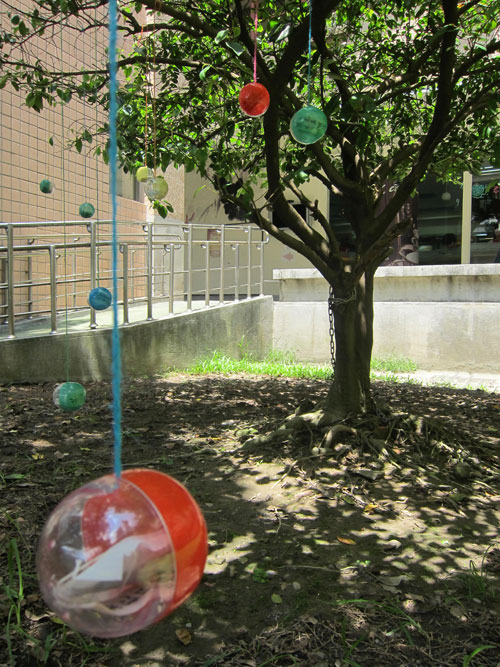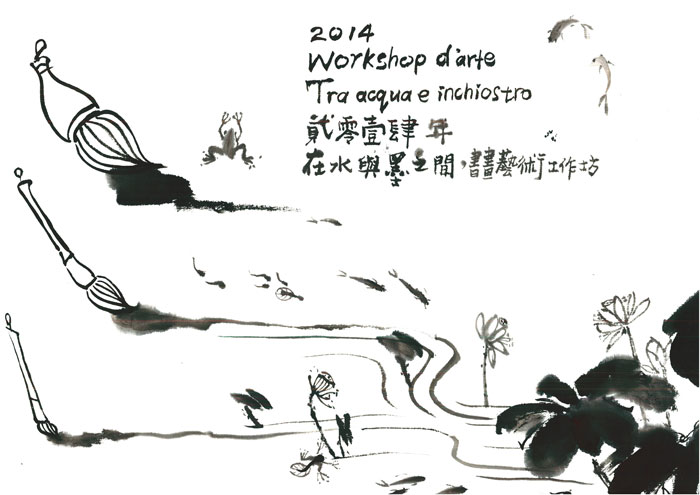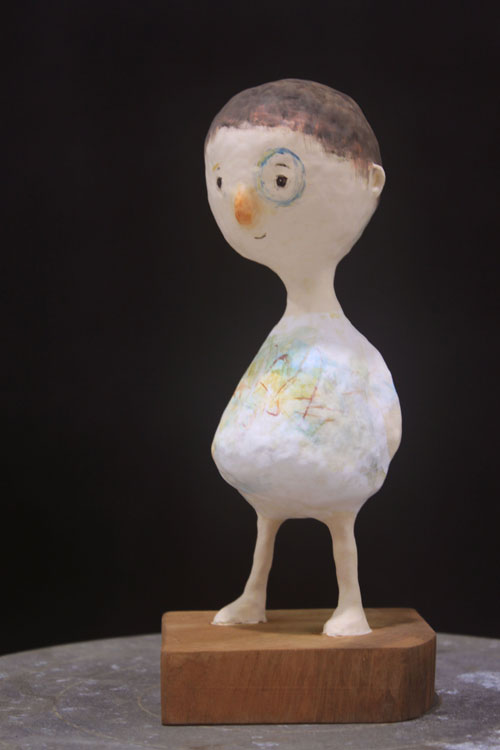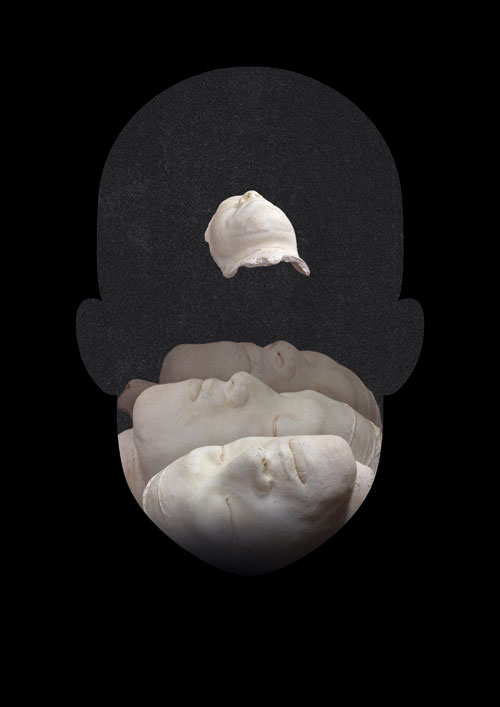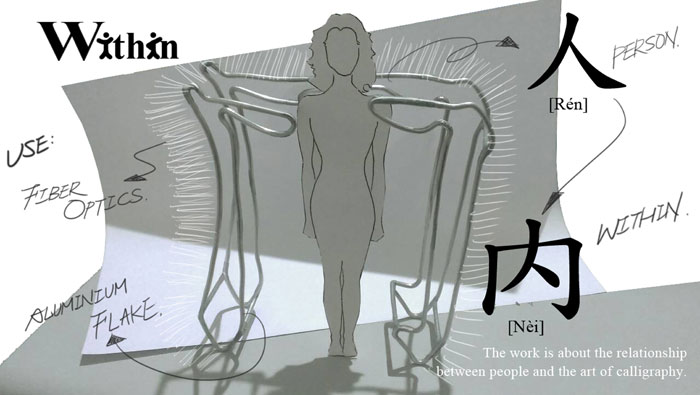NATIONAL TAIWAN UNIVERSITY OF ARTS
CHEN Ting-Chang, CHIU Fang-Yi, KOU Che-Yin, LAI Mei-Ju, LIN Yu-Chen, LU Ching-Chen, TANES Naipanich
The use of the line is universal. Embodying thoughts, stories, and ideas, it has been part of man’s visual culture since time immemorial. Yet it is likely that in China the possibilities of the line were explored to their fullest extent. Simple tools such as ink, brush and rice paper, were in fact adequate to produce an unparalleled and impressive body of artwork over millennium. More significantly, the line of the brush was what both painting and writing had in common, conveying ideas, communicating thoughts, and sustaining a world resistant to change. It was the black line that projected a sense of continuity, stability and tradition.
The outer world of course is hardly all black, yet Chinese firmly believed in the power of “blackness” to represent all colors and shades of it. The economic use of black lines enabled them to build a monochrome empire, minimalistic and ascetic, until the advent of modernism approximately a century ago.
What is to become of calligraphy in a time of ever more rapidly changing telecommunications and social media? That delicate line of ink, does it have the ability to revitalize itself and adapt to the contemporary world? If it meets that challenge, what will it look like? Or, to put it more explicitly, can this medium survive without falling into the trap of cultural or even nationalist connotation?
With the lifting of Martial Law in 1987, and especially after the emergence of globalization in the past decades, these questions which have vexed generations of Taiwanese artists have become less and less important. These young graduate students of the Department of Painting and Calligraphy, National Taiwan University of Arts, participating in the current edition of the OPEN exhibition, feel freed from the constraints of cultural determination; they produce art that stands for their own individual artistic interests.
These young artists are well acquainted with the influential “Six Principles of Painting”, an essay by the scholar and art critic Hsieh Ho (flourished 5 - 6 century AD) that fixed the theoretical framework for Chinese painting up to the present day. They are rigorously trained in the dozens of traditional brushwork techniques used to represent rocks or mountains by repetitive strokes of various forms and shapes. Yet these young artists consciously chose to follow their inner voice and strive for personal artistic expression. Standing at the beginning of their artistic careers, these seven graduate students are enjoying their international debuts, exhibiting their art and sharing their creative thoughts and ideas with Western audiences. The outcome is manifold, diverse, and fruitful. Interestingly enough, four of the participating young artists have embraced the form of relational art. Their participatory productions range from providing bodily experience, to do-it-yourself artworks, to giving the opportunity to enter into an interaction with Chinese characters or ink painting. Here the involvement of the viewer is welcome and indispensable. The three other participating artists create free-standing sculptural pieces of moderate size concentrating on the human form or psychological conditions.
“In my hometown, people often say, ‘Welcome to my house!’ Ordinary and common interaction always starts with a cup of tea”. This is the prologue of the installation work Tea•Talk by Chiu Fang-Yi. Hanging gifts on a tree as if it were Christmas, Chiu however offers no tea, but tea leaves packed in small bags as presents for the viewer, releasing a delicate and unique fragrance. While her works evoke the subject matter of hospitality, so characteristic of Taiwanese culture, the work Change by Tanes Naipanich emphasizes the pure enjoyment of inviting viewers to making art. Using a clay head and providing color pencils, he induces viewers to apply on the face whatever color in whatever form they like. The work, he says, imitates man’s habit of projecting one’s image of others onto themselves. From a blurry face devoid of any color, the work changes over the course of the audiences’ participation in an unexpected and unpredictable manner.
The human face and the human figure are the primary concern of two other pieces. In The White Y-shirt, Lai Mei-Ju creates a free-standing image of a child clad in a dress with beautiful, traditional patterns. As Lai says, the work is an homage to childhood: “White clothes are like life itself, they are waiting for children to go ahead and put them on. Innocent and fearless, these children are even more beautiful when dressed in white.”
Lin Yu-Chen’s piece The Hesitation, where a small head is set into a larger one, reflects the psychology of the human ego. The artist asks: “Bodies, propelled by consciousness, are sailing through myriad metaphors for time. When one day they crash at an exotic place, will the consciousness choose to remain or to depart?”. While The Hesitation addresses the ultimate destination of our soul, Chen Ting-Chang’s The Imitation of the Grand Silence questions logocentrism by constructing a transparent square tower, with squares of different size overlapping or “hiding” inside one another. This is accompanied by a poem: “Born in gaze/The grand silence/Seeing interpretation as real/Space compares with time/This is the arch-form of contradiction/He is born/Imitating time/for eternity”.
Lu Ching-Chen’s sculpture Two and The Workshop: Chinese Ink and Calligraphy by Kuo Che-Yin have a firm foundation in tradition, yet combined with the contemporary feature of audience participation. While the latter will invite local Venetian to join in a three afternoon’ sessions conveying the wonders of brush and ink, the former uses a structure in the form of a Chinese character; however, this character, meaning “two”, will only become visible when two people are standing inside it.
Though sharing a pedagogical impetus and providing the viewer with the fresh experience of encountering another culture, these young artists show very different approaches to artistic creation. In The Workshop, Kuo Che-Yin expresses her perspectives on art and her hope to explore the variety of painting and calligraphy through interaction with participants. In her work Two, Lu Ching-Chen follows a more straightforward path, simulating and enlarging a Chinese character in order to achieve “a transmission and exchange of cultures, a simple, clear, and interesting way for people to understand the art of calligraphy and Chinese characters”.
The National Taiwan University of Arts is the only university in the country with a department of traditional painting and calligraphy. Its aim is to protect and preserve the heritage of these ancient art forms. While the treasures of the Imperial collection at the National Palace Museum bear witness to the glories of past achievements, the present keepers of these traditions, though thoroughly versed in the handling of brush and ink, look forward to a future in which the art of blackness serves as the primary matter from which to distill a world of innumerable colors.
text by Yang Wen-I
